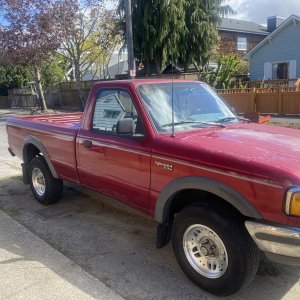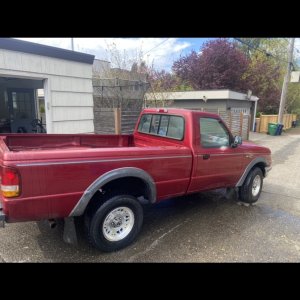Check the Fuel Pressure Regulator(FPR) vacuum hose
There are two fuel lines coming into the engine bay
IN from pump/filter goes directly to fuel rail
RETURN to tank goes to FPR, small cylinder device, and it has a Vacuum hose attached
If FPR should leak, then raw fuel will be sucked into the engine in the vacuum hose
Check the hose for gasoline, replace FPR if found
All fuel injection computers have a "Clear Flooded Engine" routine, this routine shuts off injectors while you crank the engine over to DRY IT OUT
Turn on key
Press gas pedal down to the floor and hold it down all the way
Throttle sensor at WOT(wide open) and RPMs at 0 = turn off injectors to Clear Flooded Engine
Crank engine
It should not start or even fire, there is spark but no fuel
If you release gas pedal even while still cranking injectors will start
Point of test is to see if you have a leaking injector, engine would start because fuel is leaking in
Obviously check the FPR first
Then do the Clear Flooded Engine test
If the engine starts then do this
Unplug BOTH coil packs 3 wire connectors so no spark
Do Clear Flooded Engine test again but crank it a few times
Now pull 1 spark plug from each cylinder
The one with the WET tip has the leaking injector



















